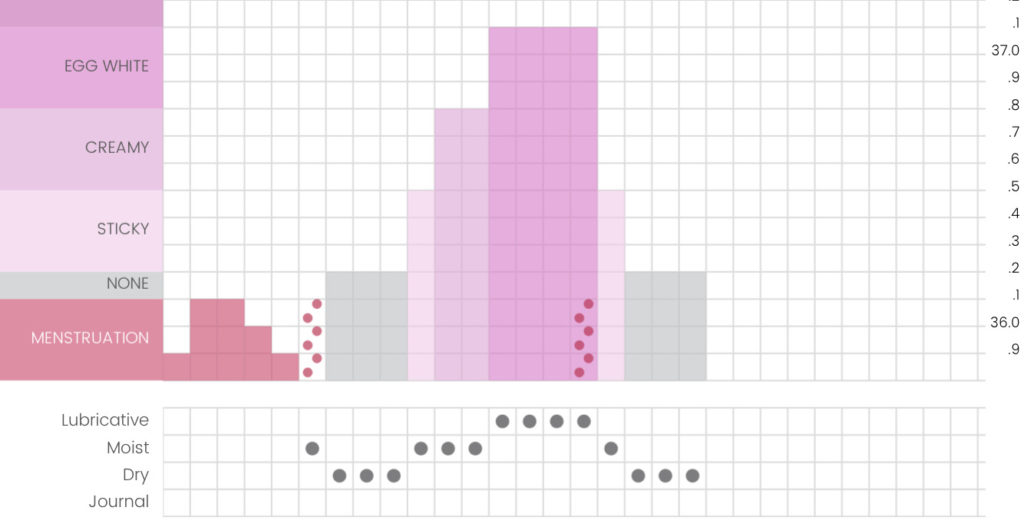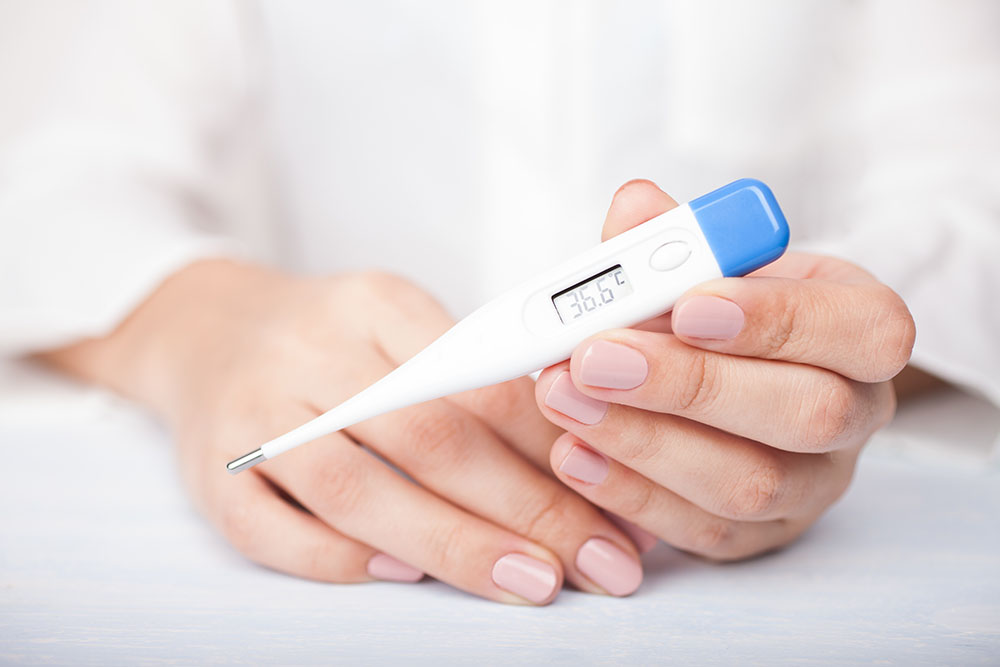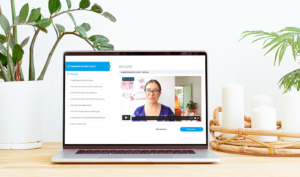
There are already enough barriers out there that stand in the way of learning about our menstrual cycles – and I don’t think the cost of Fertility Awareness-Based Method (FABM) instruction should be one of them! Unfortunately though, because FABM instruction is not covered by Medicare or private health insurance here in Australia, it remains a cost that must be paid out of pocket (and FABM instructors definitely need to be reimbursed for their time and expertise!). Here’s hoping that one day we’ll see subsidised FABM instruction – over in the United Kingdom, FABM instruction is covered in some instances under the NHS! I for one distinctly remember first learning about the Symptothermal Method and being desperate to work with an instructor … but I couldn’t afford one. However I didn’t let that stop me, and this article is a compilation of tips for cost-effective cycle charting on a budget!
While I want to encourage you that self-teaching is possible and can be cheap (or even FREE) – I also need to emphasise that effectiveness is higher when learning with an instructor. For instance, the most well-known study of the Symptothermal Method was based on users who were under the close supervision of qualified instructors of the Sensiplan protocol. This study showed that with perfect use, a 99.6% effectiveness was possible. Typical use rates were 98.2%. Subsequent criticisms of the study argue that the typical use figure may not be generalisable to the broader population due to the study design (a prospective clinical trial). In addition, these rates are based on users who were following a Symptothermal Double-Check Method – many popular self-learning books (discussed below) are Symptothermal Single-Check Methods which means they are likely to have a perfect use effectiveness closer to 98%.
However, the point of this is to say that we don’t have any effectiveness studies on the outcomes of self-teaching the Symptothermal Method. The effectiveness of self-teaching remains unknown and is highly likely to be lower than working with an instructor. Because of this, it’s important that you commit plenty of time to studying the method in depth if you need to self-teach. Plus, it’s crucial to avoid any unprotected sex for at least the first three cycles of charting while you are learning. Basically – if you’re strongly “TTA” (trying to avoid a pregnancy), then you need to take the learning process very seriously.
All that said, let’s dig in to my top 4 tips for charting on a budget!

TIP NUMBER 1
You’re going to need some sort of manual to learn from. By far, the most popular self-teaching resource is the book Taking Charge of Your Fertility (TCOYF) by Toni Weschler. While TCOYF isn’t a Symptothermal Double-Check Method, it is a fantastic resource absolutely packed with information about the reproductive system. In my opinion though, it can be a little overwhelming for new users – my go-to recommendation for self-teachers is usually to opt for the Sensiplan Handbook and Workbook instead. Sensiplan is a Symptothermal Double-Check Method and has a solid evidence-base for use.
For more details on the difference between Double-Check and Single-Check Methods click here.
TCOYF and Sensiplan aren’t your only options though. There are a number of other resources (whether online or in book-form) that are available to you. All of them are designed to be used with an instructor if possible, but you can still access them even if you haven’t signed up to work with an instructor. Keep in mind that some of these manuals do include religious content. Here are just a few of many:
Symptothermal Double-Check Methods:
- [Book] (not free) Celsius and Fahrenheit. Natural Contraception and Conception Course Handbook, by Jessie Brebner
- [Book] (not free) Celsius. Sensiplan Natural & Safe: The Handbook (must also purchase the Workbook), by Sensiplan
- [Book] (not free) Fahrenheit and Celsius. A Couple’s Guide To Fertility, by SymptoPro
- [Book] (not free) Fahrenheit. The Art of Natural Family Planning Student Guide, by Couple to Couple League
- [Book] (not free) Fahrenheit and Celsius. Natural Family Planning The Complete Approach, by Natural Family Planning International, Inc
- [FREE Online Manual] Celsius. NFPTA-UK Online Fertility Guides
- [FREE Online Manual] Celsius and Fahrenheit. Sympto Method Manual
- [FREE Online Manual] Fahrenheit and Celsius. Natural Family Planning The Complete Approach, by Natural Family Planning International, Inc
Sympothermal Single-Check Methods:
- [Book] (not free) Fahrenheit. Taking Charge of Your Fertility, by Toni Weschler
- [Book] (not free) Fahrenheit. Garden of Fertility, by Katie Singer
- [Book] (not free) Celsius. Justisse User Guide, by Justisse Foundation
Check out your local second-hand bookstore for a cheap copy of TCOYF, or head to your library to borrow it for free. For example, here on the Gold Coast of Australia I can see with a simple library catalogue search that there are three physical copies of TCOYF at different libraries within a 15km radius. In addition to this, you can even read TCOYF for FREE online by visiting archive.org (keep in mind that this is the old edition and some rules have slightly changed – but it’s still perfectly valid and very useful).

Tip Number 2
You are going to need somewhere to record your daily observations of cervical fluid and basal body temperature (and optional cervix tracking). Here, you have two options – you can either chart on paper or on a smartphone app. You’ll need to decide which is the best fit for your personal life.
If you would like to chart on an app, there are a few popular options:
FREE: Kindara app*
FREE: Lutea app
PAID: Read Your Body app
You can download and use Lutea or Kindara for FREE – that’s right, without paying a single cent. No monthly or yearly subscription costs or hidden fees. The free version of Kindara doesn’t have the option to track vaginal sensation (which is a really important part of all Symptothermal Methods); however, with the free version you get four “custom fields”. You can use three of these custom fields to set up your own version of vaginal sensation tracking.
Read Your Body app is the gold standard with full customisation options that make it suitable for all Fertility Awareness-Based Methods (FABMs). It requires a small yearly subscription which is definitely worth it if within your budget.
*Since the time of writing this article, Kindara has been bought by a new parent company. They no longer have a support team, and it’s unclear if/when Kindara app might be retired forever. This means that if you choose to use Kindara, it’s important that you back up your data regularly via their desktop portal.

If you’re wanting to paper chart – even this can be done on a budget!!
My website provides a range of beautiful FREE downloadable paper charts which you can access here.
You can also find a range of other downloadable printable paper charts at the below links. Remember, it’s best to use the chart that corresponds to the method you will be using:
- TCOYF Downloadable Printable Charts
- Sensiplan Downloadable Printable Chart
- NFPTA-UK Downloadable Printable Chart
- Sympto Downloadable Printable Chart
- SymptoPro Downloadable Printable Chart
- Natural Family Planning International, Inc Downloadable Printable Chart
If you don’t have a printer at home, most libraries have communal printers that you can use. Here on the Gold Coast, my local library allows me to print an A4 sheet in black and white for only 15c. Assuming you have around 13 menstrual cycles in a year that’s only a cost of $1.95 to paper chart each year.

Tip Number 3
You’re going to need a basal body temperature thermometer to successfully use the Symptothermal Method. In most pharmacies here in Australia, the cheapest option I have found is the SurgiPack 6335 Digital Ovulation Thermometer for $20. You can purchase it online for cheaper, but then you’ll also need to factor in shipping costs. If you’re wanting to purchase a thermometer off of Amazon, the cheapest option I have found is the Mabis Digital Basal Thermometer (although remember to factor in shipping costs). Many people use and love this thermometer.

Tip Number 4
Peer support! I cannot stress this enough. It is SO important to have the support of other people who are on the same learning journey. Peer support can connect you with people who are just starting out like you are. Plus, there are others who have been charting for years and have a lot more experience and wisdom to share with you (not to mention support when interpreting difficult charts). This is where social media platforms come in. My two absolute favourites when it comes to online communities are found on Facebook:
Fertility Awareness Method of Birth Control is a large private Facebook group with over 20,000 members. They have a wide range of useful files, and plenty of very experienced members. While the group is in no way a substitute for qualified instruction, it is a great way to get plenty of peer support. You can even practise your newfound charting skills with weekly group practise posts.
FAM Support Group is a smaller Facebook group with around 600 members. For those who are looking for a bit more of an intimate vibe this group is a great option with plenty of highly experienced members (many of whom are instructors themselves).
These groups are not a substitute for learning with an instructor; however, they definitely provide an extra safety-net with a strong sense of community and a drive to promote perfect-use charting.
Conclusion: Charting doesn’t have to break the bank
If you use a free learning manual or book, with free online peer support, and use the free app Kindara – your only cost is a thermometer which you can grab for $20 at the nearest pharmacy.
If you’re ready to invest in working with an instructor (it’s an absolute game-changer if you are able to make it happen) simply head to the Find An Instructor page.

